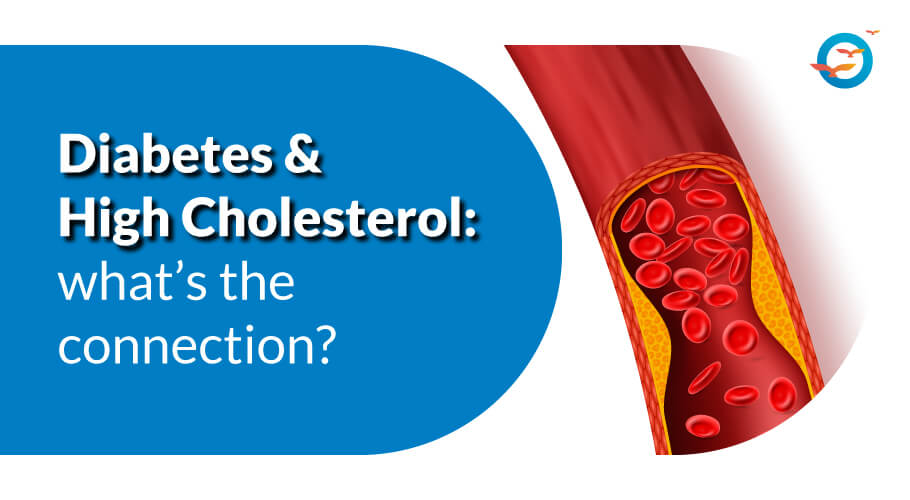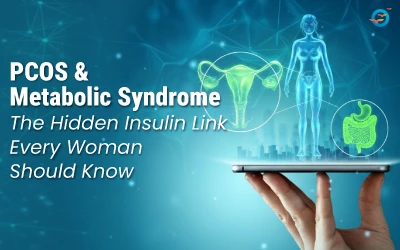Diabetes and high cholesterol: what’s the connection?

Even diabetics with well-managed blood glucose levels can develop high cholesterol, read on to understand why and what you can do to protect yourself.
What is cholesterol
Although cholesterol has become a scary word today, your body actually needs cholesterol for many metabolic essential processes including hormone production, production of bile, fat synthesis and absorption of nutrients, including vitamin D, which are needed for the efficient working of your metabolism.
Physically, cholesterol has a white, waxy texture. It is insoluble and it is transported across your body through lipoproteins. There are two types of cholesterol, categorized according to the kind of lipoprotein transporting them.
Good Cholesterol:
High-Density Lipoprotein (HDL) is commonly known as ‘good' cholesterols because it carries cholesterol away from the cells and arteries to the liver where it is broken down and disposed off.
Bad Cholesterol:
Low-density lipoprotein (LDL) is called Bad Cholesterol as it transports cholesterol to the cells, where it collects and builds up as plaque on cell and arterial walls, causing atherosclerosis (narrowing of the arteries). These plaques of cholesterol can break off and block blood flow, which can cause heart attacks/strokes.
Where does cholesterol come from?
Your body is quite capable of producing all the cholesterol it needs. So any cholesterol we get through food—especially saturated fats, trans fats—simply leads to an excess of cholesterol, which, along with the fat is absorbed into the bloodstream. As LDL levels rise, cholesterol begins to get deposited on artery walls, narrowing them and increasing the risk of cardiac disease and strokes.
Diabetes–cholesterol connection
Type 2 diabetes, even with good blood sugar control has been linked to high levels of triglycerides and low levels of HDL. Some diabetics have low levels of HDL (good cholesterol) and high levels of LDL (bad cholesterol), this condition is called diabetes dyslipidemia. It is quite common in type two diabetics
Poor blood sugar management just makes matters worse.
One possible explanation for high cholesterol in diabetics could be that diabetics have smaller and denser LDL molecules than non-diabetics. This makes it easier for the LDL particles to get into blood vessels and deposit plaque on the artery walls.
Treating high cholesterol in diabetics
For diabetics it is imperative that they treat both conditions. This will also bring down the risk of heart problems. Diet plays an important role in both intake of cholesterol and raising blood sugar levels (BSL). A good diet, rich in complex carbs, fiber, micronutrients, vitamins and low on the GI scale is good for weight loss. Exercise is equally important. Getting at least 150 minutes of physical exercise a week can help keep your blood sugar in check and help you lose weight too.
Other than lifestyle changes, you may also need medicines to help you treat high cholesterol. Your doctor might prescribe Statins, PCSK9 inhibitors or Fibrates to help with this.
Safe levels for cholesterol
Normal cholesterol levels have been set at less than 5.5 mmol (millimole) per liter—for those with no cardiovascular risk factors, i.e. people with no history of smoking, hypertension or heart disease.
In case such risk factors do exist, LDL level should be less than 2 mmol/L.
High cholesterol—symptoms
Since high cholesterol is silent and with few symptoms, until serious complications, like stroke or heart attacks occur, it is important to have regular cholesterol screening for everyone over 21, even those who feel fine.
Prevention diet
Avoid all foods that are high in saturated fats; as these are the primary cause of high cholesterol levels. These include:
- Animal products—especially fatty cuts of meat
- Dairy and dairy products
- Processed meats—bacon, salami, sausages, etc,
- Heavily salted foods
- Fried, oily food
- Confectionery
Eat more: fresh fruit and veggies, legumes, seeds, beans, leafy vegetables, etc.
Prevention—lifestyle changes
In addition to diet changes, one also needs to adopt healthy lifestyle habits, for instance:
- Stop smoking, it increases LDL movement into cells.
- Exercise. Do both cardiovascular exercise (jogging, walking) and resistance training (bodyweight exercises, weight training). Exercise has been shown to increase HDL levels and reduce LDL levels
- Lose excess weight. Losing even 5 to 10% of body weight has a significant effect on both BSL and cholesterol
- Practice good blood sugar management: High BSL is linked to high risk of heart attack/stroke and atherosclerosis
- Reduce alcohol consumption or stop entirely: alcohol is high in sugars and calories, so consuming it only increases cholesterol.
Final Words
There is no doubt that high BSL has a negative effect on cholesterol. The ideal approach would be to reverse your diabetes. A good diet-exercise-stress management-medicine routine will help you do both effectively. FFD has delivered exceptional results in both weight loss and diabetes reversal. For more information about our programs, visit us at www.freedomfromdiabetes.org and take the first step towards living a fuller, happier life.

